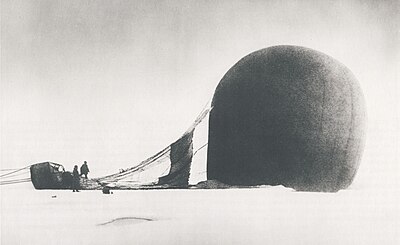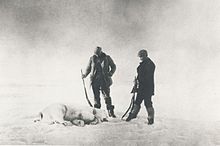The Expedition: Solving the Mystery of a Polar Tragedy by Bea Uusma - Book Review
Normally the last thing I want to do after a hard day’s work focused on a polar subject is… read yet more polar-related stuff. There are multiple books gathering dust on my bookshelves that come under this category – Antarctica, polar explorers, Arctic history and folklore, popular science – lovingly given to me by friends and family who presumed that my interest was unrelenting. A small challenge I have now set myself is to read these, and this was encouraged by one book, which I picked up on a whim from the museum in Svalbard because I had nothing else to read at the time.
The Expedition: Solving the Mystery of a Polar Tragedy by Bea Uusma tells the true story of three Swedish men who vanished in 1897 whilst attempting to be the first to cross the North Pole in a hot air balloon. Thirty three years later, their bodies were stumbled upon at the shores of the harrowing White Island, which lies to the north-east of Svalbard. There was no concluding evidence to suggest how they had ended up there and why they died – they were found with ample provisions, warm clothing, functioning weapons and plenty of ammunition. Many speculated on the cause of death, from eating polar bear liver (known to be toxic) to carbon monoxide poisoning to suicide. But there has never been consensus on which theory is more likely, with little supporting evidence for each one.

The crashed balloon in 1897, with expedition members Salomon August Andrée and Knut Frænkel. Photographed by the third expedition member, Nils Strindberg. Photography from the expedition was recovered from White Island in 1930 by a Norwegian group who stumbled across remains whilst on an expedition studying the glaciers of the Svalbard archipelago (source: Wikipedia).
Bea Uusma’s first encounter with the story occurred in the nineties when she began reading a book at a boring party about the subject. The author’s obsession grew from this as she spent fifteen years trawling through museums to find missing clues, compiling past theories, visiting White Island… and eventually providing her own theory with convincing evidence.
The narrative jumps from details of the expedition to Uusma’s own experiences trawling through museum after museum for evidence, and documenting her several attempts to visit White Island. The level of her obsession is obvious, with documented diary entries and thorough record of their diets in the lead up to their deaths. This is nicely broken up with images, tables, maps and diagrams. It kept me captivated and I was continually wondering whether she could conclude what really did happen rather than just add another theory to the mix. The ending conclusion is worth sticking around for. In my opinion, her evidence is very conclusive and a much stronger argument than any of the other theories out there. I’m bursting to write about it but I don’t want to spoil it for anyone else!

Frænkel (left) and Strindberg (right) with their first polar bear kill. The three expedition members encountered many polar bears on the pack ice and on the shores of White Island. They lived off a diet of polar bear and seal for the majority of their time after the crash, which first began speculation that they died of dietary-related issues such as Trichinosis (a parasite found in undercooked meat), Vitamin A poisoning (from eating polar bear liver), lead poisoning (from their canned food), scurvy and diarrhoea (source: Wikipedia)
Overall, this book has a great balance of detailed documentation and the author’s personal exploration. Uusma gracefully navigates the trap of producing a very dry record of events. As I said, this book has really sparked an interest in reading more about early polar exploration, which I am quite embarrassed to say that I know little about (I hang my glaciology head in shame). Hopefully whatever I read next will be as good as this!
